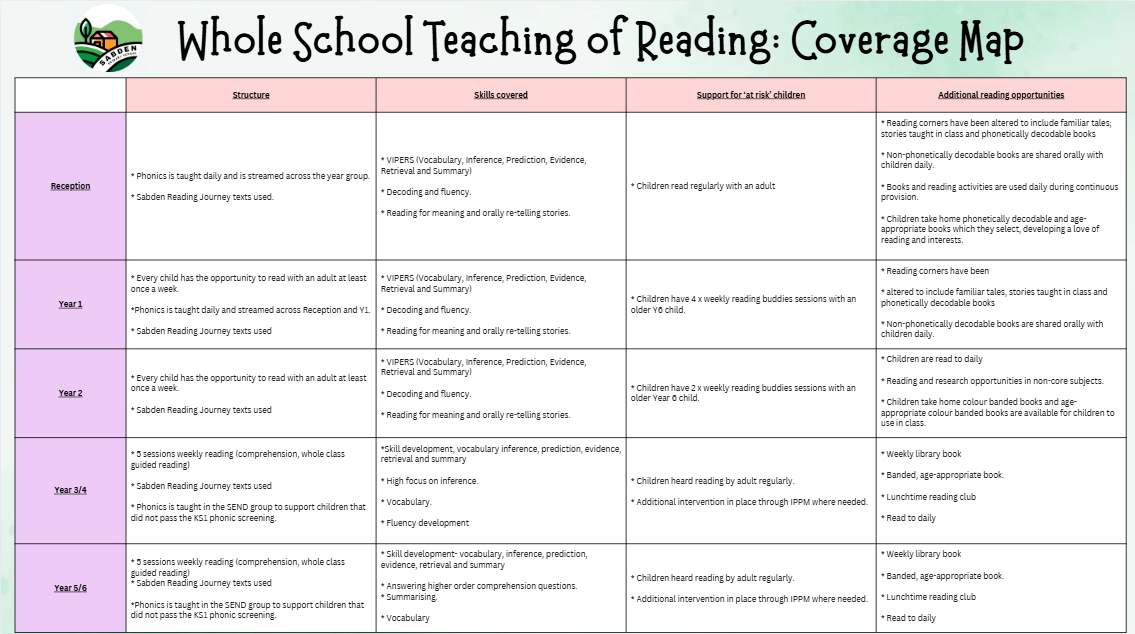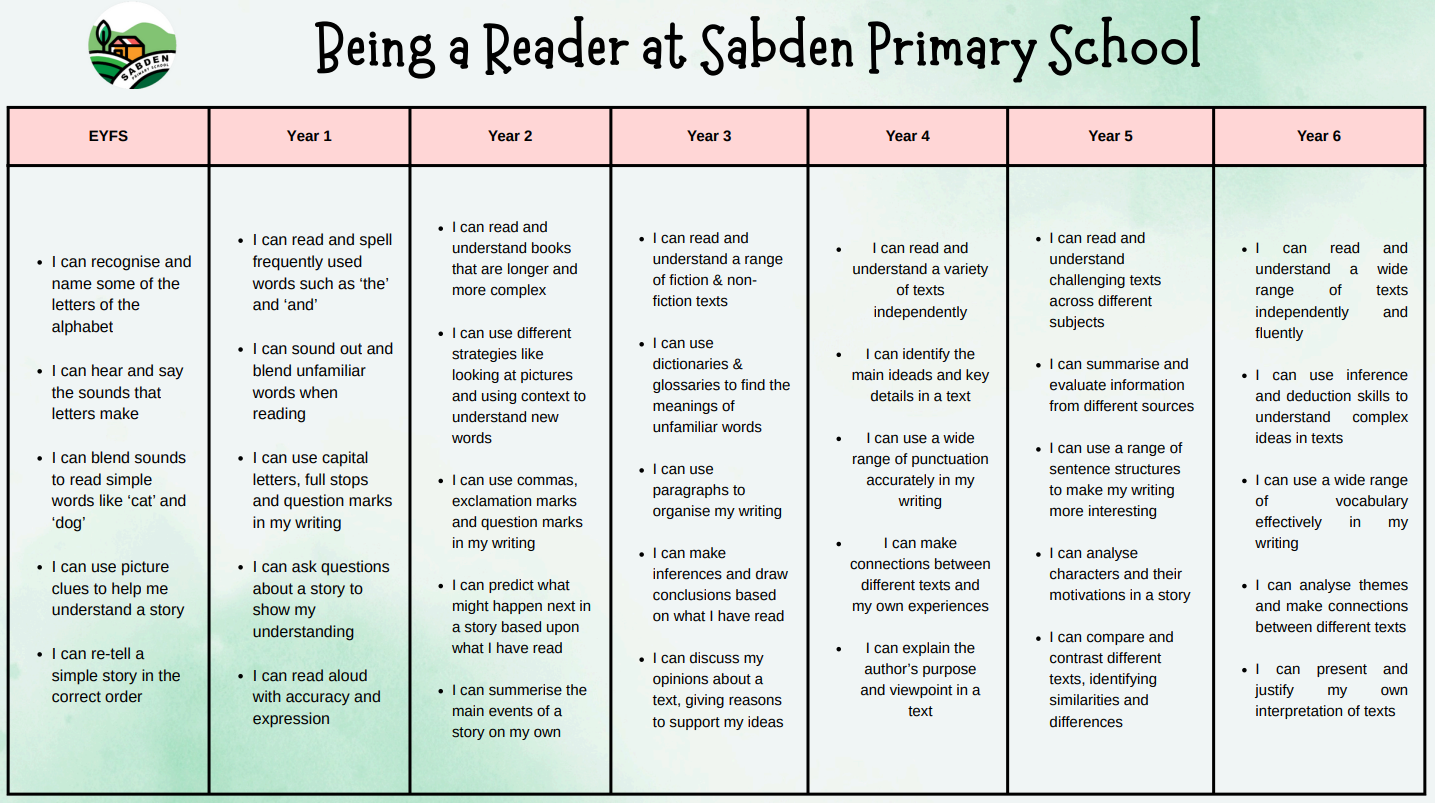English Reading
What does Reading look like at Sabden?
At Sabden Primary School, we believe that all pupils should have the opportunity to be fluent, confident readers who are able to successfully comprehend and understand a wide range of texts. We want pupils to develop a love of reading, a good knowledge of a range of authors, and be able to understand more about the world in which they live through the knowledge they gain from texts.
By the end of their journey at primary school, all children should be able to read fluently and with confidence in any subject in their forthcoming secondary education. We do not put a cap on what pupils can achieve in reading, and we do not hold pre-conceptions about any pupils’ ability to make progress. We understand the importance of parents and carers in supporting their children to develop both word reading and comprehension skills, and so we want to encourage a home-school partnership which enables parents and carers to understand how to enhance the skills being taught in school through good-quality texts.
How do we implement Reading at Sabden?
We teach phonics and reading skills as whole class lessons, so that all children have access to the age-related skills and knowledge contained in the National Curriculum. Within lessons, Teachers and Teaching Assistants target support for those children working below age-related expectations to enable them to achieve at an age-related level wherever possible. Children working above age-related expectations are also given opportunities to demonstrate a greater depth of understanding through extended answers, targeted questioning requiring more reasoned answers and making greater links across and between texts.
Phonics: Early Years and Key Stage 1
Pupils are taught the skills of learning to read through daily phonics teaching (see our phonics page for further information), small group guided reading, and whole group text discussion.
Children working below age-related expectations are given additional support from Teachers and Teaching Assistants, either within the whole class lesson or as part of planned interventions that take place in addition to the lesson.
During the Summer Term in Year 1, pupils will undertake a Phonics Screening Test which assesses their ability to apply what they have learnt to a list of unseen words. Pupils who do not pass their Phonics Screening Test continue to have intervention to support the acquisition of these key skills and their understanding of the phonetic alphabet.
Home Readers
Children following the phonics programme, take home phonetically decodable reading books in line with what they have learnt at school. At the end of the phonics teaching phase, children progress onto book bands from turquoise to black. This ensures progression in both word reading skills and comprehension. Children have access to a wide range of texts and are encouraged to embed their reading skills within each stage.
All pupils have a home-reading record (reading journal in upper key stage two) which they take home daily. In Key Stage One and Year 3, parents and carers are asked to add comments to the home-reading records to indicate how much pupils have read. In years 4–6, children are encouraged to log their own reading journey in their reading journals. Children are responsible for ensuring these are regularly updated, and targeted readers (the bottom 20%) are heard reading multiple times through the week by an adult. Children across school are heard reading regularly in class, and where necessary, additional intervention or support is put in place.
Whole Class Reading Lessons: Year 2 – Year 6:
Feedback:
Feedback in guided reading sessions is ‘in the moment’ and responds to children’s misconceptions or need to delve a little deeper. Feedback/next steps from these sessions are also noted on the guided reading planning sheets kept by teachers.
Summative Assessment
Summative assessments will be recorded each half-term and reported termly. Teachers will use their professional judgement to determine whether a child is working within age-related expectations, above or below. They will base their judgements, for the most part, on the quality of the written outcome pupils are given after structured teaching within the agreed reading skills.
Teachers may also complete reading assessments (NFER/SATS) to provide another piece of evidence to support their assessment judgement. If tests are used, care is taken to ensure that pupils are prepared appropriately for the test, and any barriers to accessing these are removed.
Whole School Teaching of Reading: Coverage Map

Being a Reader at Sabden Primary School

